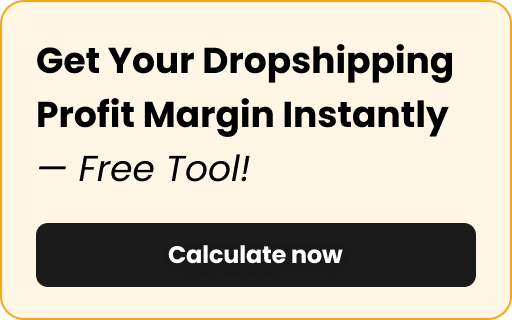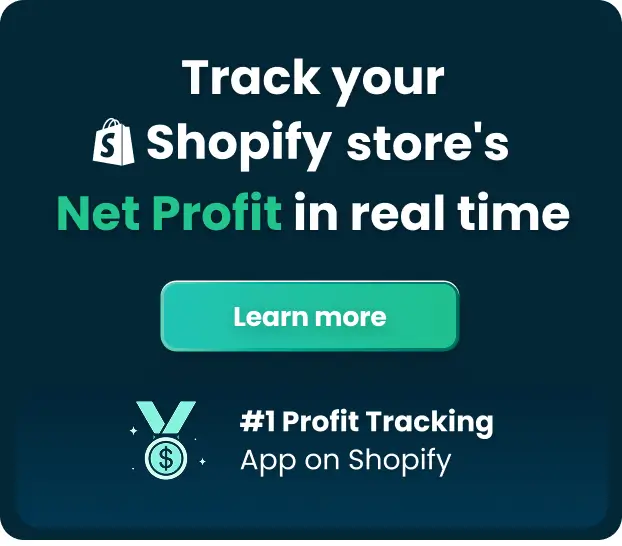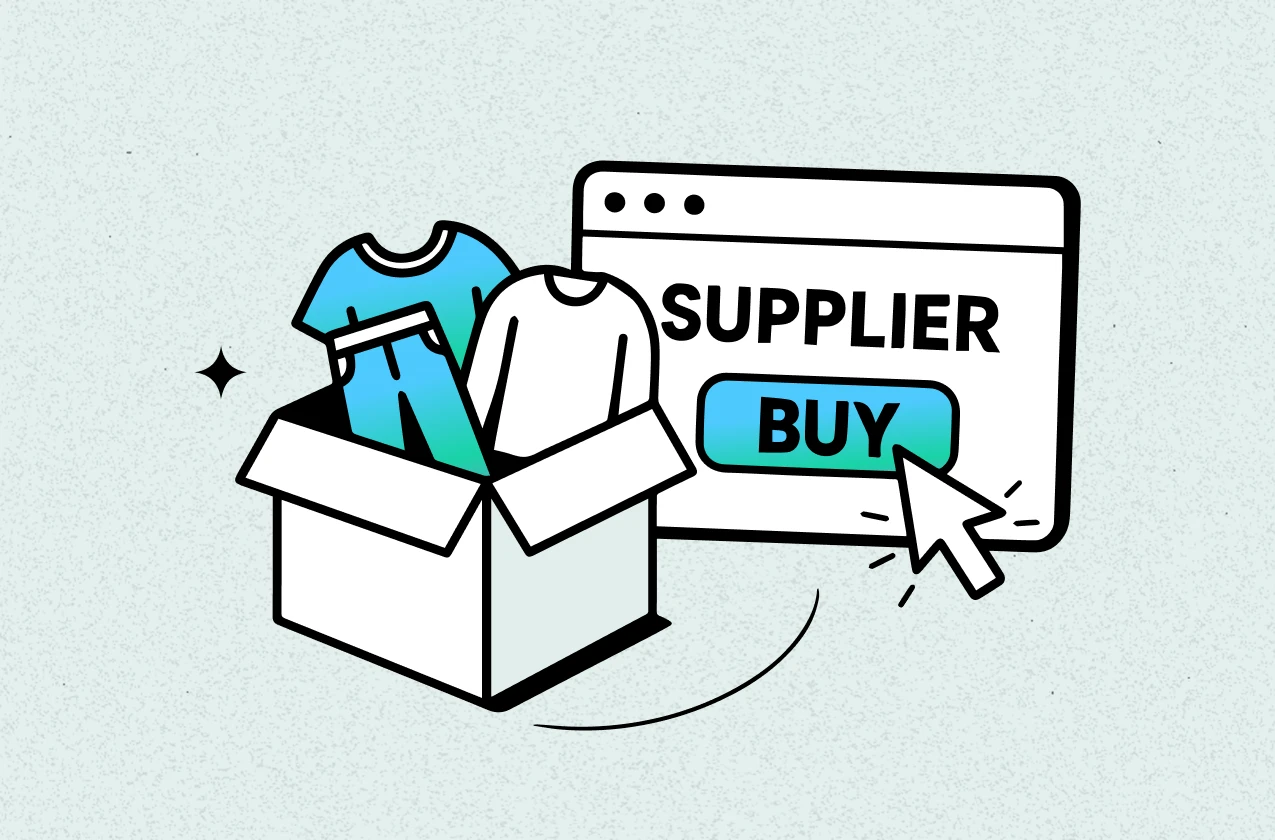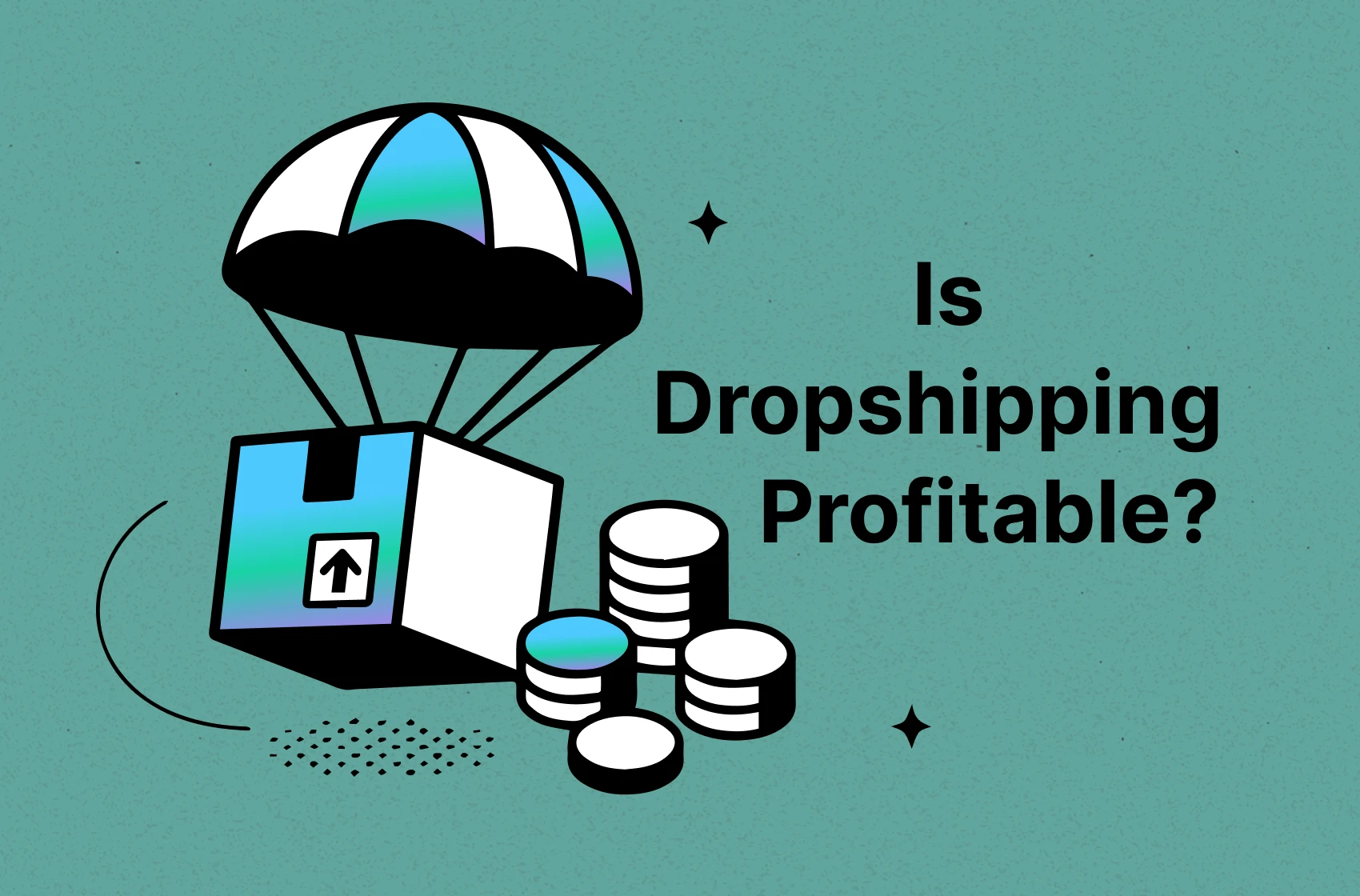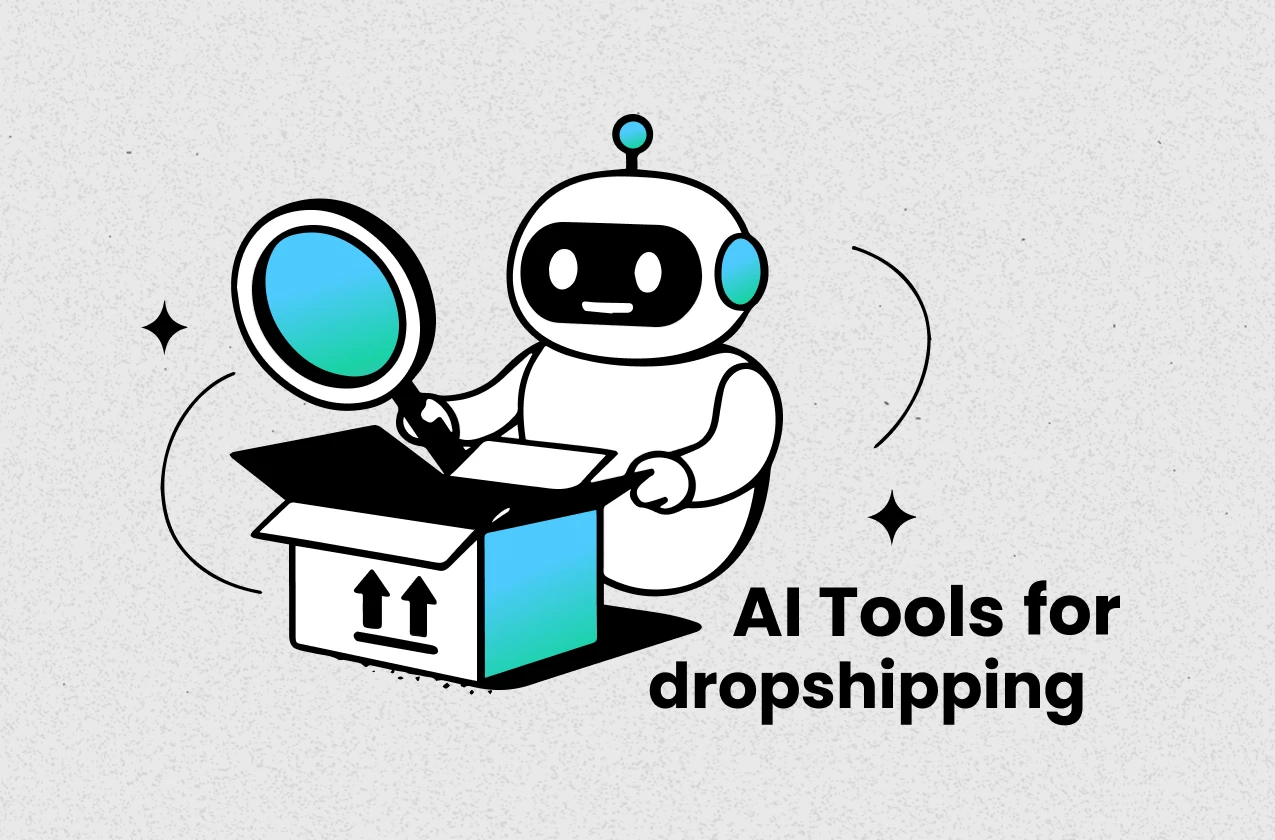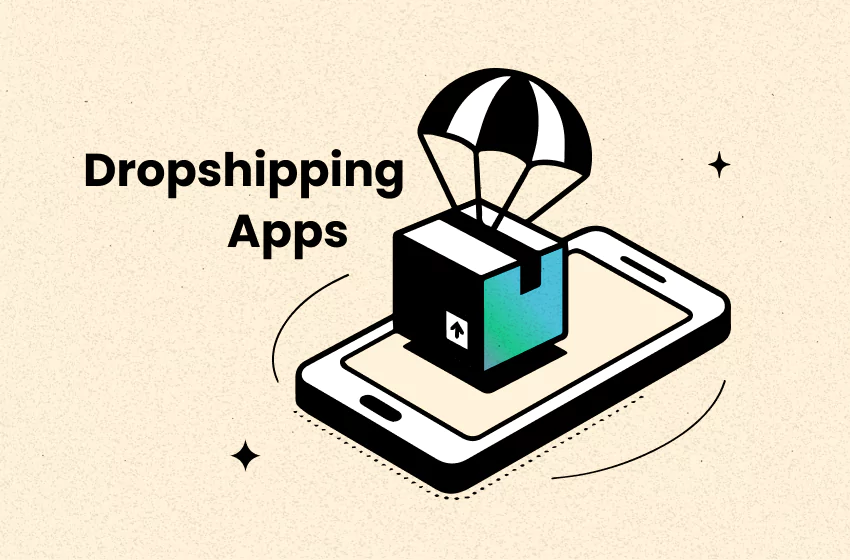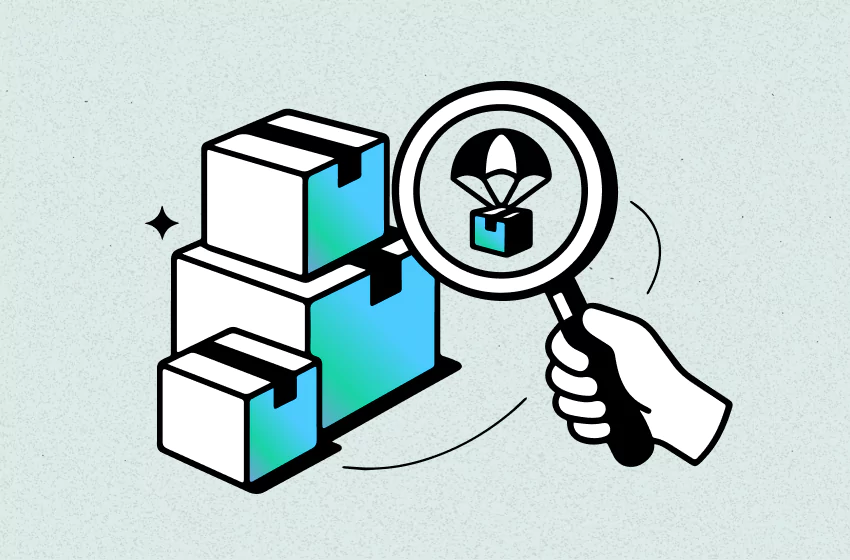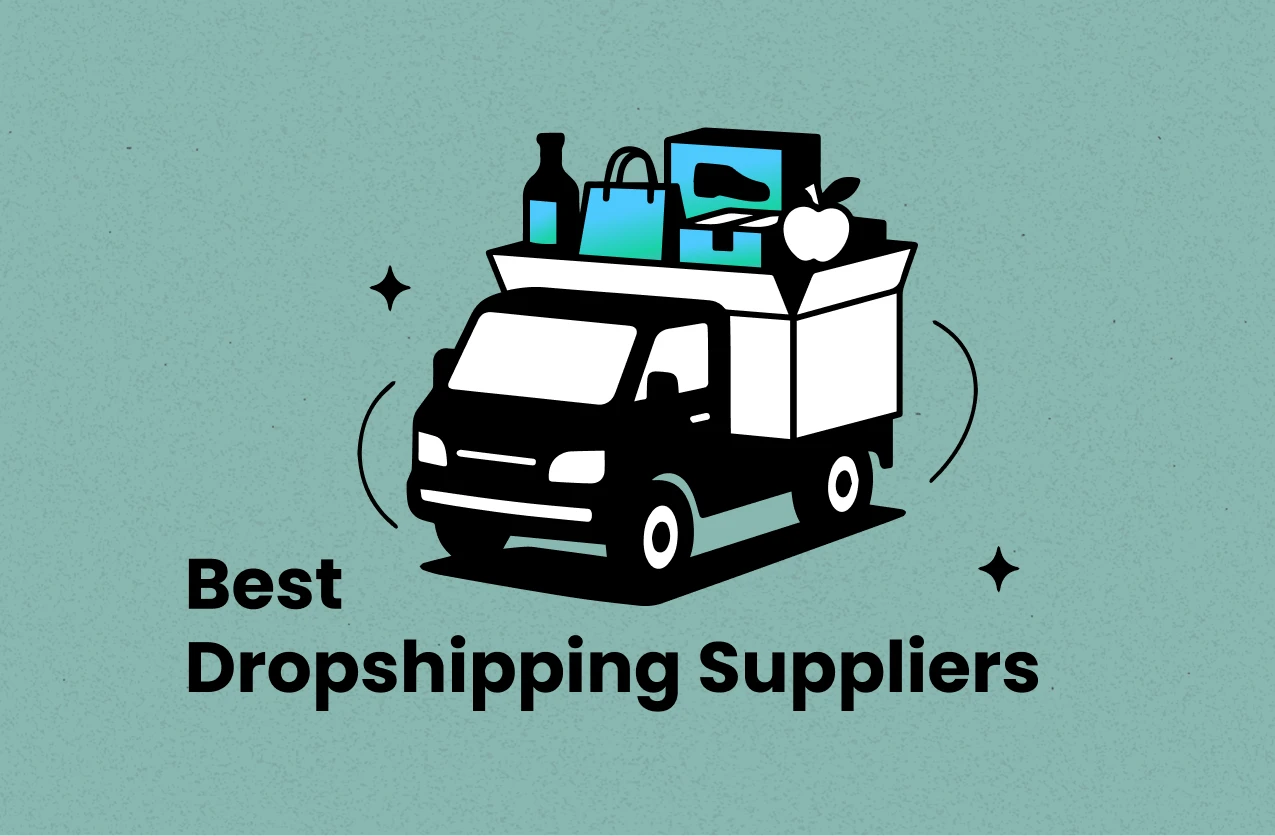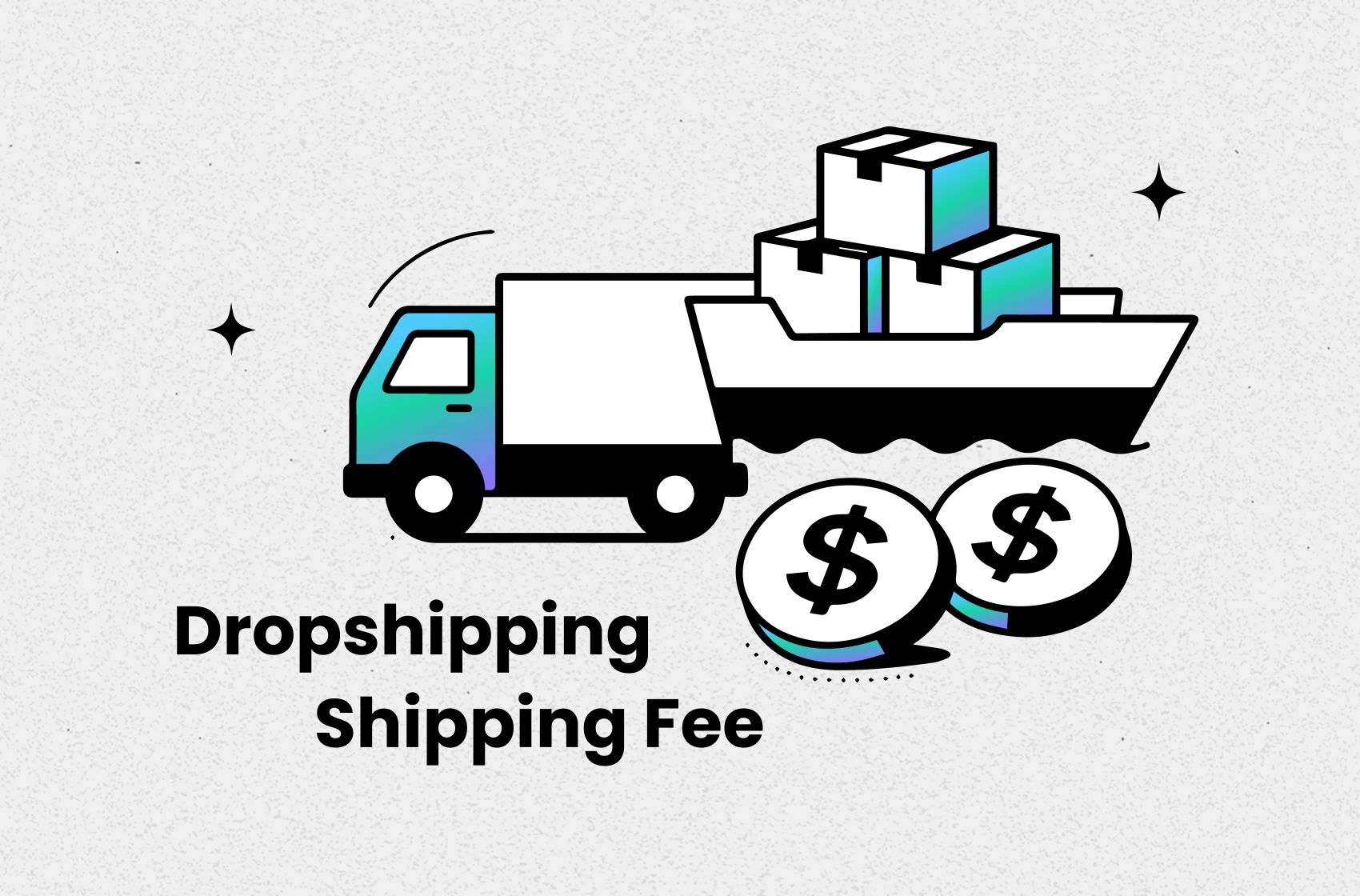How to Start a Profitable Dropshipping Clothing Business?
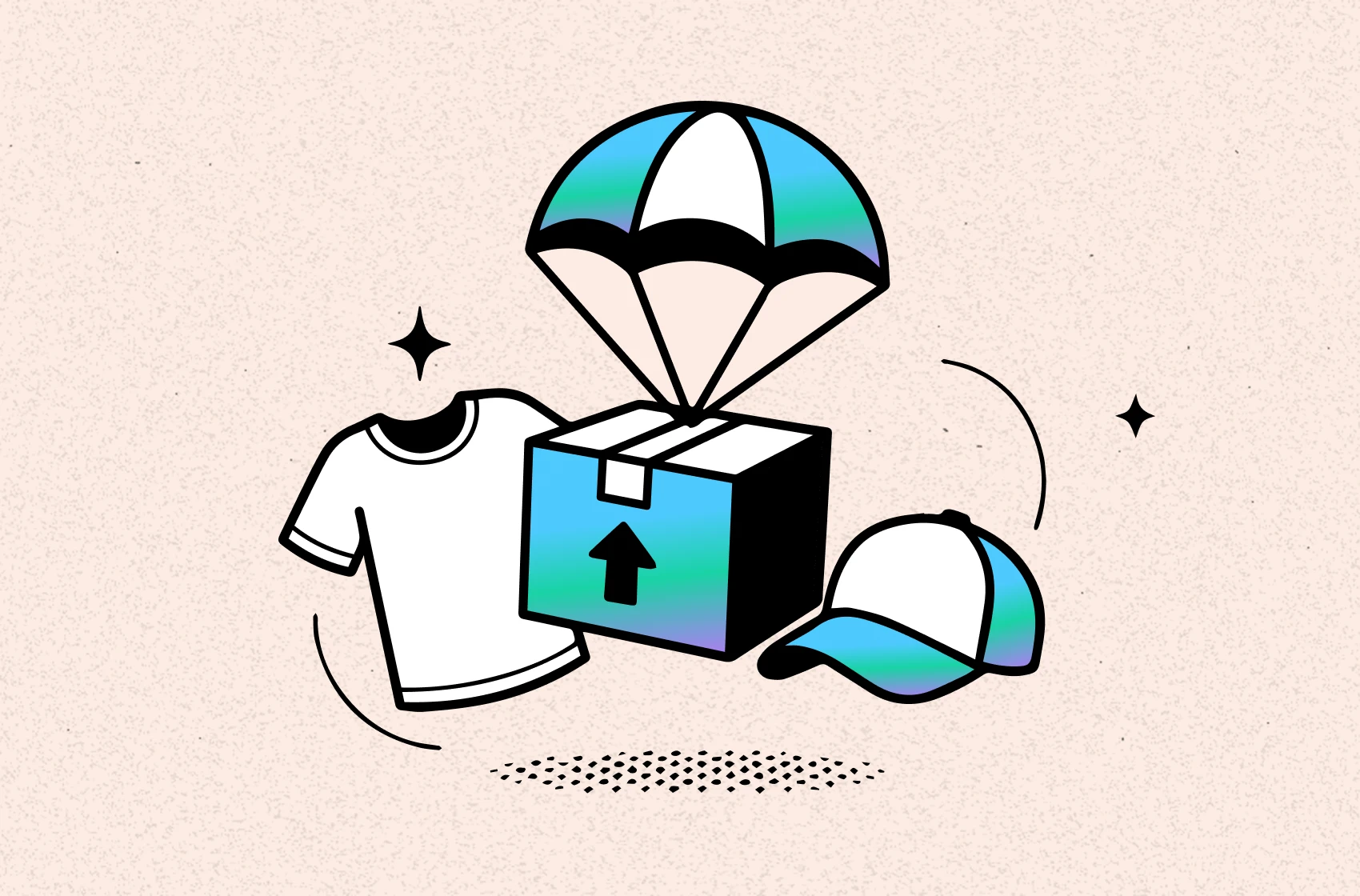
Clothing is one of the most competitive yet profitable dropshipping niches. With fashion trends changing fast and consumer demand constantly rising, many beginners choose clothing when starting their first dropshipping store.
In this guide, we’ll walk you through 6 practical steps on how to start a profitable dropshipping clothing business, explore what profit margins look like in fashion dropshipping, and share unique insights from Harry Chu, Founder of TrueProfit, on what it really takes to succeed.
How to Start a Profitable Dropshipping Clothing Business: 6 Steps
Here're 6 steps to start a profitable clothing dropshipping brand.
Step 1. Select a Profitable Niche
A profitable niche is a market segment where products can sell at a profitable margin. Good profit margin for apparel typically falls between 5% and 10%. Anything below this margin range is too weak to build a profitable clothing dropshipping after covering the cost of goods sold (COGS), shipping, and marketing.
Such profit margins are rare in mass-market niche like T-shirts but are often seen in targeted sub-categories like “stylish plus-size dresses”, “ recycled fabric hoodies”, or “yoga pants”. These sub-niches let sellers target specific audiences, which lead to larger margins but lower competition—sellers don’t directly compete with fast-fashion giants like Zara or H&M.

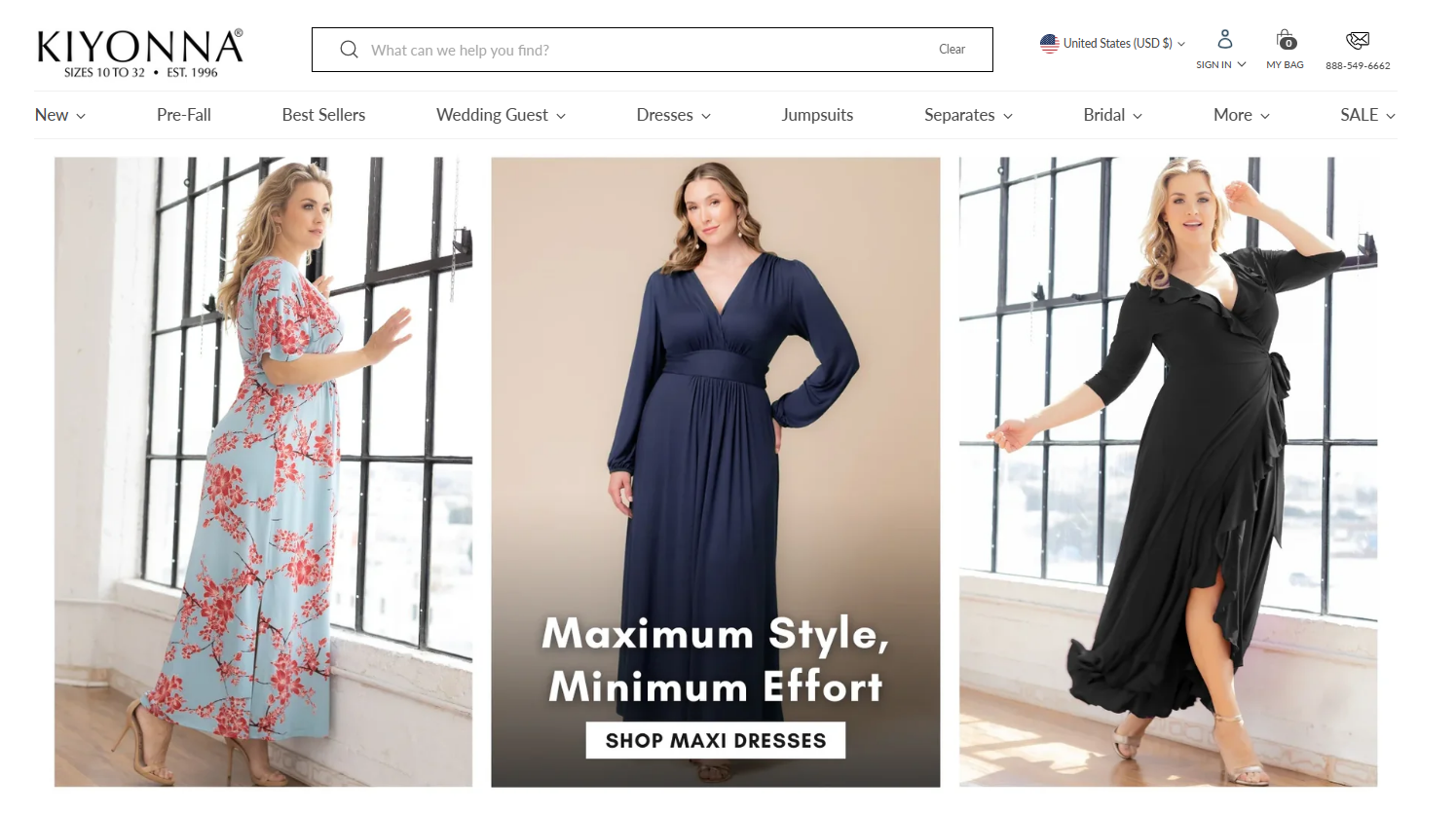
Here are free tools/platforms commonly used to find a clothing dropshipping niche:
Meta’s Audience Insights. It’s a free tool for tracking demographic and interest data about Facebook and Instagram users. Enter keywords like “activewear,” “sustainable clothing,” or “maternity fashion” to see the size of the audience, their age ranges, gender breakdown, and what pages they follow.
Google Trends. Google Trends helps track the frequency of search on a specific keyword. Type in product keywords like “plus-size activewear” or “eco-friendly hoodies” and analyze whether interest is growing or declining. If searches are consistently rising, that niche has long-term potential.
Google Keyword Planner. Google Keyword Planner is a keyword research tool that shows search volume and competition levels. Search clothing-related terms like “maternity leggings” or “streetwear dropshipping” to see monthly search volumes.
Online Marketplaces. Browse best selling product categories on platforms like Amazon, Etsy, and even TikTok Shop. Look for products with high ratings but not yet heavily saturated in ads or online stores.
Further Reading
Step 2. Pick the Potential Winning Products
Not all products promise you a big profit, even best-selling products or top trending items recommended every year. Harry Chu, Founder of TrueProfit once shared his own definition:
A potential winning product has its ability to generate profit consistently.
Those products usually check off three signs:
- High profit margin: An average profit margin ranges from 5-10%. Anything beyond 10% is high.
- High demand: Anything with 10,000 – 100,000 monthly searches globally is considered high demand.
- Low to medium competition: Not already flooded but still have room to sell.
Here’s how Harry Chu make potential product to a real winner:
Pick 1-3 potential products. You better start with a product that meets three above checks: clear demand, low competition, and healthy profit margin.
Set a healthy selling price. Harry Chu often aims for at least a 5–10% markup on each product. It’s a healthy price not only covers costs but also allows room for ad spend, shipping fluctuations, and promotions without eating into profits. Follow our practical tip on designing an e-commerce pricing strategy.
Track net profit margin over time. Net profit margin is the ultimate measure of a product's profitability. Understanding this metric helps you spot the high profit margin product and the profit leak based on its real impact on the bottom line, not guessing.
Further Reading
Step 3. Choose a Reliable Supplier
Choosing the right clothing dropshipping supplier can make or break the store success, since suppliers have big control on shipping delivery time, order quality, and return policy a seller can support their customer.

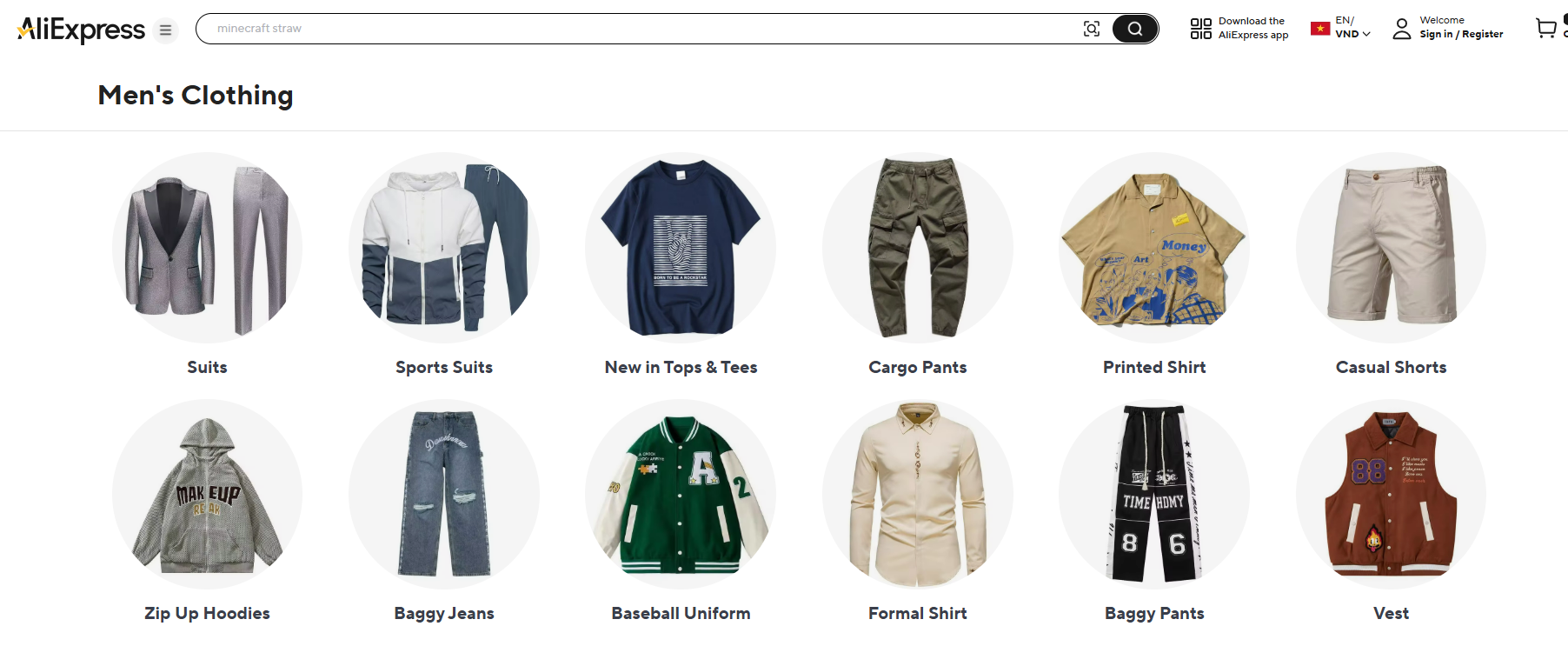
Here are four proven ways to track down reliable suppliers:
Use Shopify supplier directories. Directories like Zopi, Spocket, or DSers make it easy to connect with vetted clothing suppliers. These platforms are curated to integrate directly with Shopify, saving you time and ensuring smoother operations.
Try Google Lens. By uploading a screenshot of a trending clothing item, sellers can quickly identify websites that list it. Look out for domains tagged with “wholesale,” “distributor,” or “supplier” to spot potential partners.
Browse marketplaces. Global platforms such as Alibaba, AliExpress, DHgate, or Global Sources are full of clothing suppliers. You can filter by product category, region, and supplier rating to find those who meet your standards.
Join dropshipping communities. Start with the r/dropship subreddit, which is already filled with merchants sharing experiences and supplier recommendations.
Step 4. Choose a Selling Platform
The selling platform you choose will directly affect how easy it is to launch, run, and scale your clothing dropshipping business. Here are some of the best platforms to consider:
- Shopify – Best for dropshipping beginners
- WooCommerce – Best for sellers who already use WordPress
- BigCommerce – Best for stores with large catalogs
- Wix – Best for stylish design stores
- Etsy – Best for handmade or unique fashion items
Among these options, we pick Shopify as the best for new dropshippers thanks to its quick store setup, and a wide range of automation apps that help scale dropshipping stores more efficiently.
You can find a full list of best dropshipping apps—both free and paid—organized by business stage in our article.
Step 5. Set Up Your Online Store
Let’s say the selling platform is Shopify, here's how to set it up:
- Sign up for a Shopify account (free trial included).
- Pick a store theme that fits your niche and brand.
- Customize with your logo, brand colors, fonts, homepage layout, and essential pages.
- Add products using Shopify’s editor or import them via dropshipping apps like Zopi.
- Set up payment gateways (Stripe, PayPal) and shipping zones with rates.
- Test everything on mobile to ensure a smooth shopping experience.
Step 6. Connect a Dropshipping App
A dropshipping app is the tool that links your Shopify store to suppliers — letting you import products, sync inventory, fulfill orders, and automate the back-end of your business.
Our 5 recommended apps are:
- Zopi offers seamless product importing and order fulfillment with one-click automation
- Spocket focuses on faster shipping from US/EU suppliers
- Zendrop is great for branded dropshipping and faster delivery
- CJ Dropshipping supports wide product range, global fulfillment centers
- AutoDS specializes in product research, automation, and suppliers all-in-one
Is Clothing Still a Profitable Niche for Dropshipping?
Clothing is still a profitable niche for dropshipping in 2025.
According to Shopify, fashion & apparel sits at the top of online shopping categories, with consumers expected to spend ~$760B on fashion online in 2025.

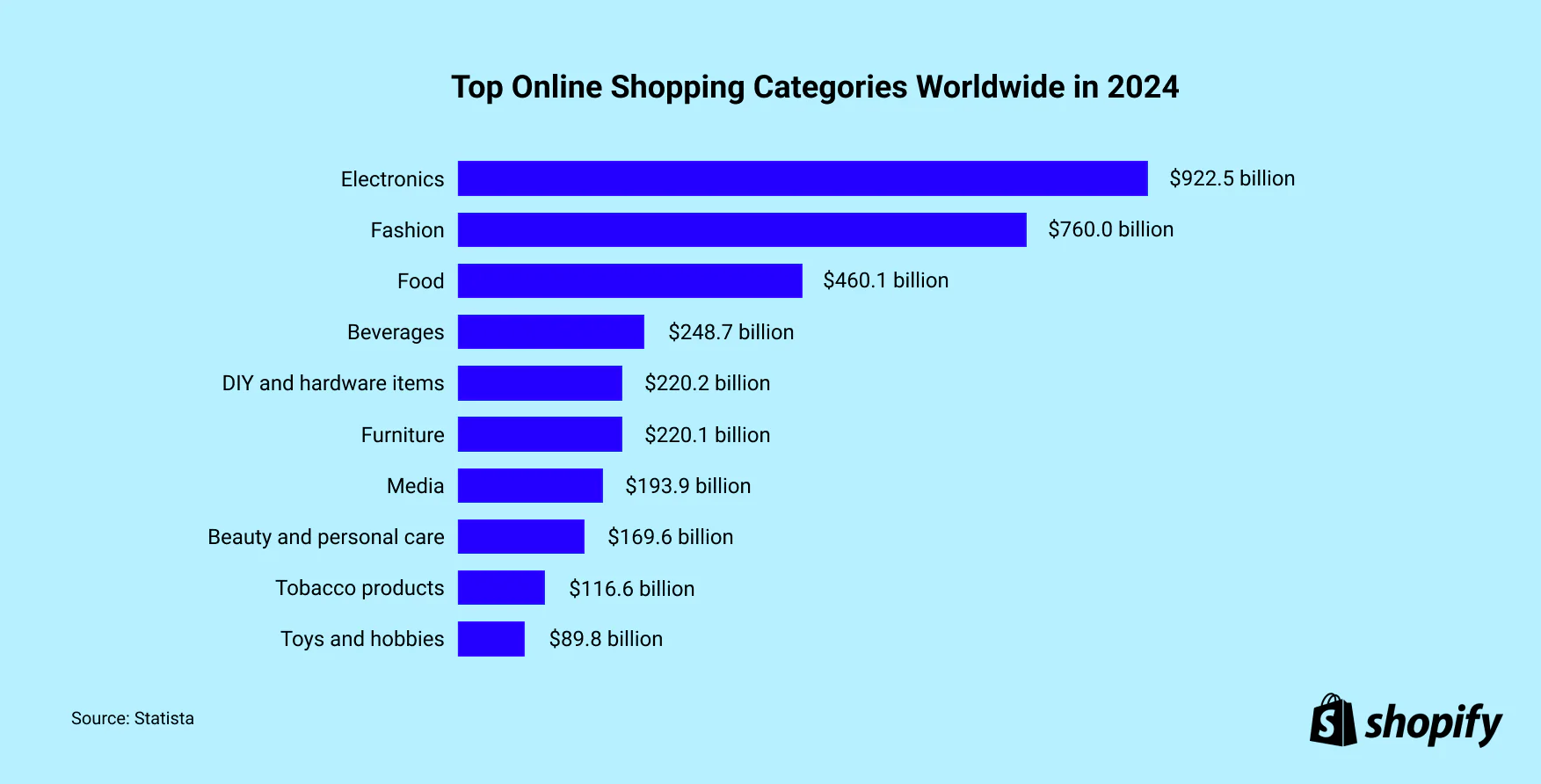
Yet, competition also remains high as Shopify now has over 520,000 clothing stores. Margins are slim unless sellers focus on high-value niches, differentiate stores by branding strategies, and carefully control costs
Further Reading
What is a Good Profit Margin for a Clothing Dropshipping Store?
A healthy gross profit margin for a clothing store usually falls between 50–60%, but the metric that really matters is net profit margin, which often ranges around 5–10%. For example:
- Basic t-shirts: 20–25% margin
- Activewear sets: 30–40% margin
- Niche fashion (eco-friendly, plus-size, custom prints): 40–50% margin
Treating those profit margin benchmarks as flexible is key. Instead of locking into one “ideal” number, sellers should see it as a moving target and regularly review it against these shifting factors to make smarter pricing and scaling decisions.
Final Thoughts
Clothing dropshipping can be profitable, but it requires more than just launching a Shopify store and adding products. You need to choose the right niche, manage your costs, and constantly track your margins to stay ahead.
That’s where TrueProfit comes in. As the Shopify profit analytics app, it helps dropshippers track real-time net profit by factoring in COGS, shipping, discounts, transaction fees, and ad spend. Instead of guessing, you’ll know exactly how much profit each clothing item brings in—and scale with confidence.


Further Reading
How to Start a Profitable Dropshipping Clothing Business FAQs
Can I start dropshipping with $100?
Yes, you can start with $100, but it’s tight. Most of your budget will go toward setting up a store and testing ads. Expect limited room for product testing and marketing, so growth may be slow at first.
Is clothing a good niche for dropshipping?
Yes, clothing is one of the strongest niches because it’s evergreen, highly demanded, and allows for strong branding. However, it’s also competitive, so success often comes from targeting a specific fashion niche rather than selling everything.
Does Zara do dropshipping?
No, Zara does not offer dropshipping. Zara operates on a fast-fashion retail model and sells directly through its own stores and website.
How can a beginner dropship?
A beginner can start by picking a niche, finding reliable suppliers, setting up an online store (often with Shopify), and promoting products through social media or ads. The key is to start small, test products, and scale based on results.
How much minimum money is required for dropshipping?
On average, you need at least $200–$500 to start. This covers your store subscription, domain, product samples, and marketing costs. Starting with less is possible, but having more gives you better testing flexibility.
Can I start dropshipping with $50?
Technically yes, but it’s very limiting. With $50, you may only afford a domain and a few weeks of a store subscription, leaving little to no budget for ads. Organic marketing (TikTok, Instagram, or SEO) would be your only real option.
What is the most sold thing in dropshipping?
Fashion items, tech gadgets, beauty products, and home essentials often top the list. In clothing specifically, trending apparel like athleisure, streetwear, and seasonal fashion usually perform best.
How to tell if clothing is dropshipping?
You can often tell if clothing is dropshipped by checking long shipping times, generic product images, or lack of custom branding. Many stores also list sizing charts that look identical to those on supplier sites.
What’s the hardest thing about dropshipping?
The hardest part is standing out in a competitive market. Challenges often include finding winning products, dealing with thin margins, ensuring reliable suppliers, and managing customer expectations with shipping times.
Lila Le is the Marketing Manager at TrueProfit, with a deep understanding of the Shopify ecosystem and a proven track record in dropshipping. She combines hands-on selling experience with marketing expertise to help Shopify merchants scale smarter—through clear positioning, profit-first strategies, and high-converting campaigns.

